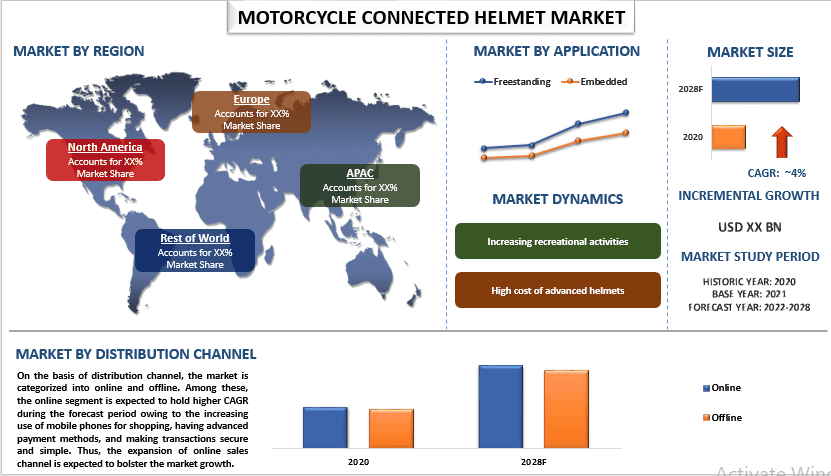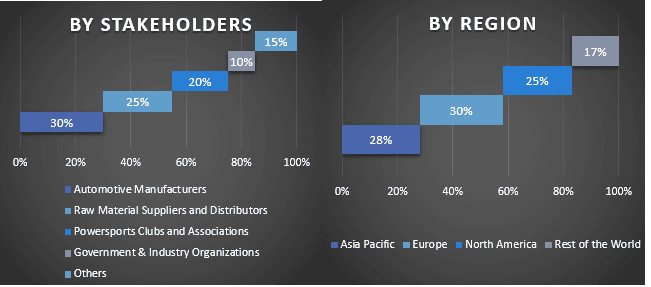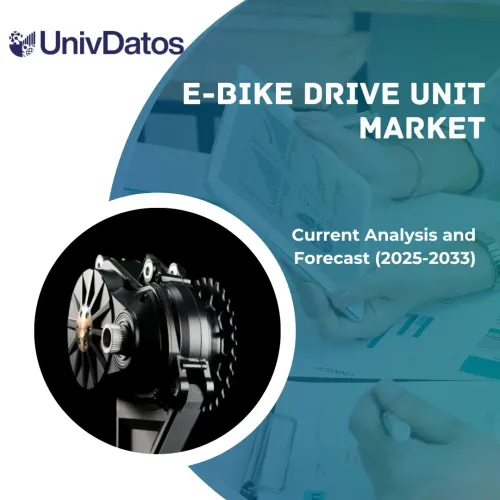Рынок мотоциклетных шлемов с подключением: текущий анализ и прогноз (2022-2028 гг.)
Акцент на применении (отдельно стоящие и встроенные); канал распространения (онлайн и офлайн); и регион/страна

ЗАПРОСИТЬ БЕСПЛАТНЫЙ ОБРАЗЕЦ PDF
Ожидается, что мировой рынок мотоциклетных шлемов с возможностью подключения будет расти значительными темпами, примерно на 4%, в течение прогнозируемого периода. Мотоциклетные шлемы считаются важным средством защиты многими мотоциклистами. Шлемы должны использовать оборудование для безопасности, а расширенные функции подключенных шлемов делают их очень надежными. Кроме того, многие производители мотоциклетных шлемов разрабатывают высококачественные функции, чтобы побудить потребителей носить шлем. Увеличение количества мотоциклов и любителей спортивных мотоциклов, увеличение числа аварий и технологический прогресс являются ключевыми факторами, определяющими рост рынка. Например, в январе 2020 года компания Tali Helmet запустила CES 2020. Шлем окружен светодиодами с изменяющимся цветом для улучшения видимости, с функциями, включающими задний стоп-сигнал и указатели поворота. Подключенный через Bluetooth к вашему смартфону, Tali может не только воспроизводить музыку, принимать телефонные звонки или зачитывать навигационные инструкции, но и автоматически совершать вызов в службы экстренной помощи при обнаружении падения или аварии.
Bayerische Motoren Werke AG, BITwave Pte. Ltd, Dainese S.p.A, Visa Outdoor Operations LLC, HJC Helmets, UCLEAR Digital, AIROH, Shelliostech, Reevu America и Schuberth GmbH. — вот некоторые из ключевых игроков на рынке. Эти игроки предприняли несколько слияний и поглощений, а также партнерств, чтобы предоставить клиентам высокотехнологичные и инновационные продукты/технологии.
Аналитические данные, представленные в отчете
«Среди приложений, встроенная категория будет занимать значительную долю рынка в 2020 году»
На основе применения рынок сегментируется на автономные и встроенные. Встроенная категория занимала значительную долю рынка в 2020 году. Встроенные шлемы обеспечивают безопасность, простоту общения, GPS, а также отправку и получение текстовых сообщений, что, в свою очередь, помогает водителю не отвлекаться во время езды и поддерживать безопасное и надежное вождение. Следовательно, это факторы, определяющие рост рынка.
«Среди каналов сбыта онлайн будет занимать значительную долю рынка в 2020 году»
На основе канала сбыта рынок делится на онлайн и офлайн. Среди них ожидается, что онлайн-сегмент будет расти с более высоким среднегодовым темпом роста в течение прогнозируемого периода из-за увеличения использования мобильных телефонов для совершения покупок, наличия современных способов оплаты и обеспечения безопасности и простоты транзакций. Таким образом, ожидается, что расширение канала онлайн-продаж будет способствовать росту рынка.
«В Азиатско-Тихоокеанском регионе ожидается рост с более высоким среднегодовым темпом роста в течение прогнозируемого периода»
Для лучшего понимания внедрения рынка отрасли мотоциклетных шлемов с возможностью подключения рынок анализируется на основе его всемирного присутствия в таких странах, как Северная Америка (США, Канада, остальная часть Северной Америки), Европа (Германия, Великобритания, Франция, Испания, Италия, остальная часть Европы), Азиатско-Тихоокеанский регион (Китай, Япония, Индия, остальная часть Азиатско-Тихоокеанского региона), остальной мир. Ожидается, что в Азиатско-Тихоокеанском регионе среднегодовой темп роста будет значительным в течение прогнозируемого периода. Китайский рынок мотоциклетных шлемов развился и занимает значительную долю рынка. Усилия по сокращению использования двухколесных транспортных средств, работающих на бензине, и контролю загрязнения в некоторых крупных городах привели к сокращению количества мотоциклов в стране. Однако спрос на шлемы растет из-за роста числа электрических двухколесных транспортных средств. Индия является самым быстрорастущим рынком мотоциклетных шлемов в Азиатско-Тихоокеанском регионе из-за большого количества покупателей двухколесных транспортных средств в стране. Рост индустрии шлемов обусловлен не только мотоциклами для пригородных перевозок, но и более крупными и дорогими двухколесными транспортными средствами. Кроме того, развитие инфраструктуры в сельских районах также стимулирует продажу двухколесных транспортных средств и, в свою очередь, по прогнозам, повысит спрос на шлемы. Правительства во всем мире предпринимают необходимые шаги для предотвращения увеличения числа смертей, вызванных дорожно-транспортными происшествиями. Например, правительство Индии приняло закон об использовании шлемов в городах второго и третьего уровня для обеспечения безопасности дорожного движения.
Причины купить этот отчет:
- Исследование включает в себя анализ размера и прогнозирования рынка, подтвержденный проверенными ключевыми экспертами отрасли.
- Отчет представляет собой краткий обзор общих показателей отрасли с первого взгляда.
- Отчет охватывает углубленный анализ известных представителей отрасли с уделением основного внимания ключевым финансовым показателям бизнеса, ассортименту продукции, стратегиям расширения и последним разработкам.
- Подробное изучение факторов, сдерживающих факторов, ключевых тенденций и возможностей, преобладающих в отрасли.
- Исследование всесторонне охватывает рынок по различным сегментам.
- Углубленный анализ отрасли на региональном уровне.
Варианты настройки:
Глобальный мотоциклетный шлем с возможностью подключения может быть дополнительно настроен в соответствии с требованиями или любым другим сегментом рынка. Кроме того, UMI понимает, что у вас могут быть свои собственные потребности бизнеса, поэтому не стесняйтесь обращаться к нам, чтобы получить отчет, который полностью соответствует вашим требованиям.
Содержание
Методология исследования рынка мотоциклетных подключенных шлемов (2022-2028 гг.)
Анализ исторического рынка, оценка текущего рынка и прогнозирование будущего рынка глобального рынка мотоциклетных подключенных шлемов были тремя основными шагами, предпринятыми для создания и анализа внедрения мотоциклетных подключенных шлемов в основных регионах мира. Было проведено тщательное вторичное исследование для сбора исторических данных о рынке и оценки текущего размера рынка. Во-вторых, для подтверждения этих выводов были приняты во внимание многочисленные результаты и предположения. Кроме того, были проведены исчерпывающие первичные интервью с отраслевыми экспертами по всей цепочке создания стоимости глобального рынка мотоциклетных подключенных шлемов. После принятия и проверки рыночных показателей посредством первичных интервью мы использовали нисходящий/восходящий подход для прогнозирования полного размера рынка. После этого были приняты методы разбивки рынка и триангуляции данных для оценки и анализа размера рынка сегментов и подсегментов отрасли. Подробная методология описана ниже:
ЗАПРОСИТЬ БЕСПЛАТНЫЙ ОБРАЗЕЦ PDF
Анализ исторических размеров рынка
Шаг 1. Углубленное изучение вторичных источников:
Было проведено подробное вторичное исследование для получения исторических данных о размере рынка мотоциклетных подключенных шлемов из внутренних источников компании, таких как годовые отчеты и финансовая отчетность, презентации результатов деятельности, пресс-релизы и т. д., и внешних источников, включая журналы, новости и статьи, правительственные публикации, публикации конкурентов, отраслевые отчеты, базы данных третьих сторон и другие надежные публикации.
Шаг 2. Сегментация рынка:
После получения исторических данных о размере рынка мотоциклетных подключенных шлемов мы провели детальный вторичный анализ для сбора исторических рыночных данных и распределения по различным сегментам и подсегментам для основных регионов. Основные сегменты, включенные в отчет, — это применение и канал сбыта. Кроме того, был проведен анализ на уровне стран для оценки общего внедрения моделей тестирования в этом регионе.
Шаг 3. Факторный анализ:
После получения исторических данных о размере рынка различных сегментов и подсегментов мы провели детальный факторный анализ для оценки текущего размера рынка мотоциклетных подключенных шлемов. Кроме того, мы провели факторный анализ с использованием зависимых и независимых переменных, таких как применение и канал сбыта мотоциклетного подключенного шлема. Был проведен тщательный анализ сценариев спроса и предложения с учетом ведущих партнерств, слияний и поглощений, расширения бизнеса и запуска продуктов в секторе мотоциклетных подключенных шлемов по всему миру.
Оценка и прогноз текущего размера рынка
Оценка текущего размера рынка: На основе действенных идей, полученных в результате 3 вышеуказанных шагов, мы пришли к текущему размеру рынка, ключевым игрокам на глобальном рынке мотоциклетных подключенных шлемов и рыночным долям сегментов. Все необходимые процентные доли и разбивки рынка были определены с использованием вышеупомянутого вторичного подхода и проверены посредством первичных интервью.
Оценка и прогнозирование: Для оценки и прогнозирования рынка различным факторам, включая движущие силы и тенденции, ограничения и возможности, доступные для заинтересованных сторон, были присвоены веса. После анализа этих факторов были применены соответствующие методы прогнозирования, то есть нисходящий/восходящий подход, для получения прогноза рынка на 2028 год для различных сегментов и подсегментов на основных рынках мира. Методология исследования, принятая для оценки размера рынка, включает:
- Размер рынка отрасли с точки зрения выручки (в долларах США) и темпы внедрения мотоциклетных подключенных шлемов на основных рынках внутри страны
- Все процентные доли, разделения и разбивки рыночных сегментов и подсегментов
- Ключевые игроки на глобальном рынке мотоциклетных подключенных шлемов с точки зрения предлагаемых продуктов. Кроме того, стратегии роста, принятые этими игроками для конкуренции на быстрорастущем рынке
Подтверждение размера и доли рынка
Первичное исследование: Были проведены углубленные интервью с ключевыми лидерами общественного мнения (KOL), включая руководителей высшего звена (CXO/вице-президенты, руководители отдела продаж, руководители отдела маркетинга, руководители операционного отдела, региональные руководители, руководители стран и т. д.) в основных регионах. Затем результаты первичных исследований были обобщены, и был проведен статистический анализ для доказательства заявленной гипотезы. Данные, полученные в результате первичных исследований, были объединены с данными вторичных исследований, что превратило информацию в полезные выводы.
Разделение первичных участников по разным регионам

Инженерия рынка
Для завершения общей оценки рынка и получения точных статистических данных по каждому сегменту и подсегменту глобального рынка мотоциклетных подключенных шлемов была применена методика триангуляции данных. Данные были разделены на несколько сегментов и подсегментов после изучения различных параметров и тенденций в областях применения и каналов сбыта на глобальном рынке мотоциклетных подключенных шлемов.
Основная цель глобального исследования рынка мотоциклетных подключенных шлемов
В исследовании были точно определены текущие и будущие рыночные тенденции глобального рынка мотоциклетных подключенных шлемов. Инвесторы могут получить стратегическую информацию, на которой основывать свои решения для инвестиций, на основе качественного и количественного анализа, проведенного в исследовании. Текущие и будущие рыночные тенденции определили общую привлекательность рынка на региональном уровне, предоставив промышленным участникам платформу для использования неиспользованного рынка для получения выгоды от преимущества первопроходца. Другие количественные цели исследований включают:
- Проанализировать текущий и прогнозируемый размер рынка мотоциклетных подключенных шлемов в стоимостном выражении (в долларах США). Кроме того, проанализировать текущий и прогнозируемый размер рынка различных сегментов и подсегментов
- Сегменты в исследовании включают области применения и канал сбыта.
- Определение и анализ нормативно-правовой базы для мотоциклетного подключенного шлема
- Анализ цепочки создания стоимости с участием различных посредников, а также анализ поведения клиентов и конкурентов в отрасли.
- Проанализировать текущий и прогнозируемый размер рынка мотоциклетных подключенных шлемов для основного региона.
- Основные страны регионов, исследованные в отчете, включают Азиатско-Тихоокеанский регион, Европу, Северную Америку и остальной мир.
- Профили компаний, занимающихся производством мотоциклетных подключенных шлемов, и стратегии роста, принятые участниками рынка для сохранения устойчивости на быстрорастущем рынке
- Углубленный анализ отрасли на региональном уровне
Связанные Отчеты
Клиенты, купившие этот товар, также купили










